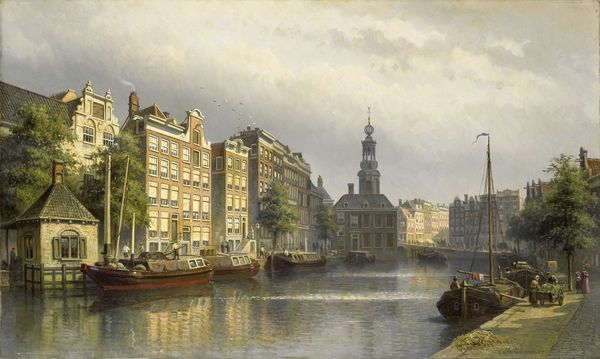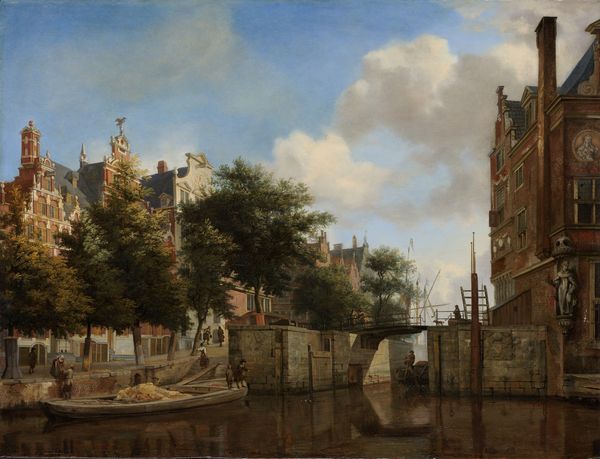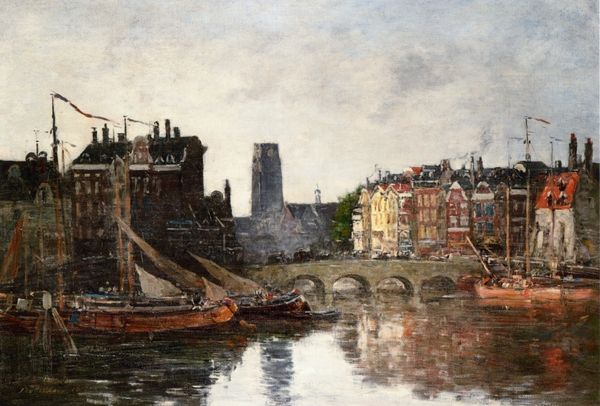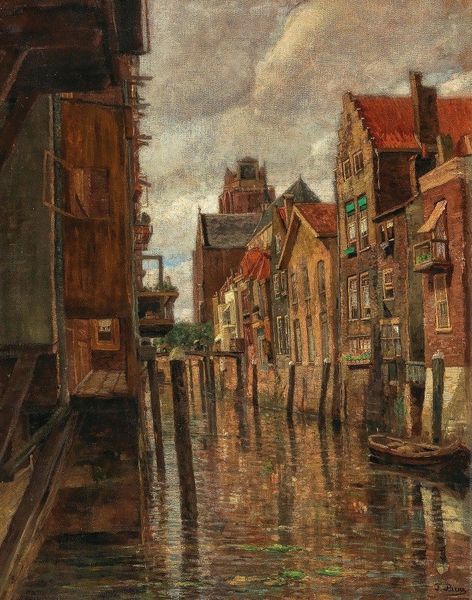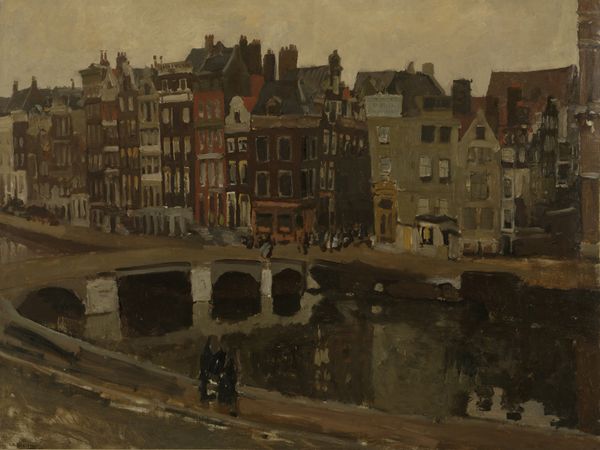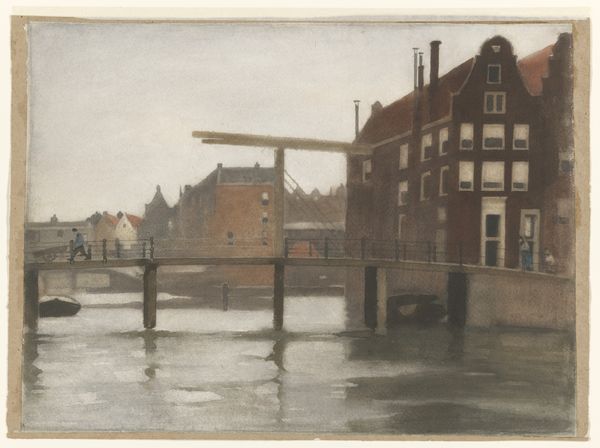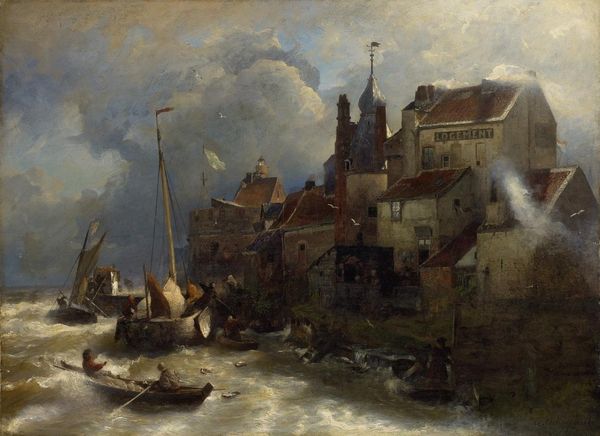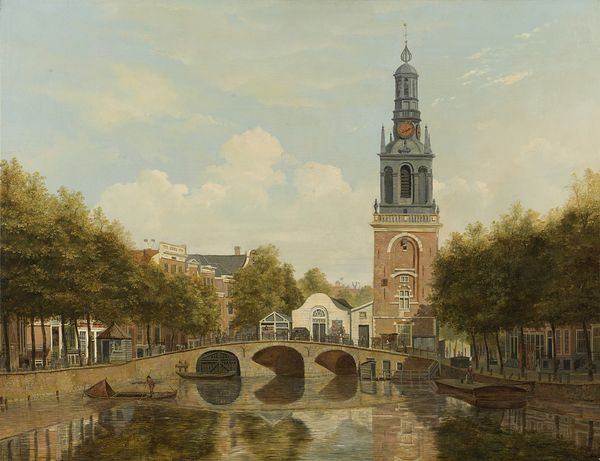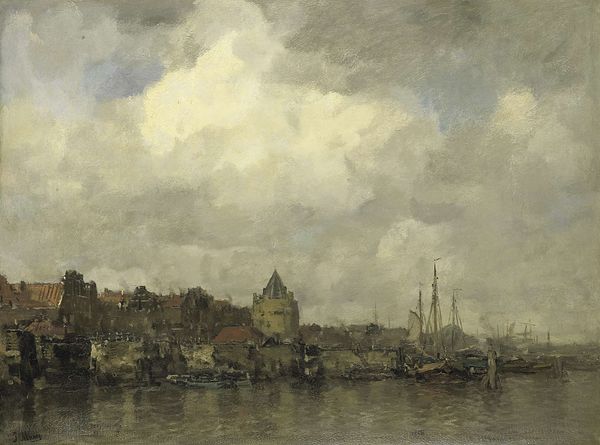
Dimensions: height 100 cm, width 150 cm, depth 15 cm
Copyright: Rijks Museum: Open Domain
Editor: This is "The Damrak, Amsterdam," painted by George Hendrik Breitner in 1903, using oil on canvas. It captures the bustling waterfront of Amsterdam. There’s something gritty, yet beautiful about the scene. What catches your eye when you look at it? Curator: For me, this painting serves as a powerful commentary on the socio-economic realities of early 20th century Amsterdam. Breitner, known as the 'painter of the people,' wasn't just depicting a pretty cityscape; he was documenting the lives of the working class, their connection to the port, and the grit of urban life often overlooked. Do you see how the muted color palette mirrors the somber mood, perhaps hinting at the challenges faced by those who relied on the harbor for their livelihoods? Editor: I hadn't considered that! I was drawn to the way the light catches the buildings and the water, but I see your point about the muted palette and the possible connection to social commentary. So, Breitner isn't just painting a scene; he's telling a story. Curator: Precisely. And it’s a story deeply intertwined with questions of labor, class, and the rapid urbanization of Amsterdam at the time. The Damrak was the city's harbor and stock exchange. There were considerable divides in wealth right in the city center. Think about how the composition draws your eye not to the grand architecture, but to the workers on the docks. What does that tell you about Breitner's perspective? Editor: That he’s making a deliberate choice to focus on the people, not just the place. He's showing the human element of this cityscape. I never considered impressionism this way. I see this work of art from a very different angle now. Thank you. Curator: Art gives a space to examine culture in time.
Comments
rijksmuseum about 2 years ago
⋮
Since 1889 Amsterdam’s Centraal Station has blocked the link between the Damrak (a straight stretch of the Amstel River) and the IJ (the city’s former bay). Once an open body of water, the Damrak was turned into an inner harbour. Here Breitner depicted the houses on the Warmoesstraat and the Oudekerk tower. He used a photograph, which included the Koopmansbeurs (Commodity Exchange) – then under construction. In his painting, this building was completely omitted.
Join the conversation
Join millions of artists and users on Artera today and experience the ultimate creative platform.
